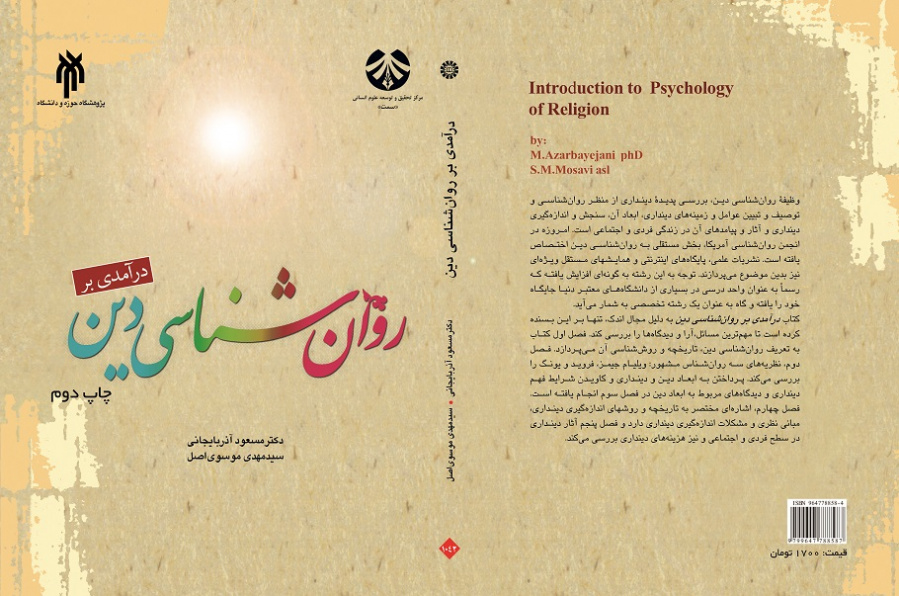

Introduction to Psychology of Religion
The task of the psychology of religion is to study the phenomenon of religiosity from the viewpoint of psychology and to describe and explain the factors and contexts of religiosity, its dimensions, measuring religiosity, and its effects and consequences in individual and social life. An independent section of the American Psychological Association is devoted to the psychology of religion today. Scientific journals, Internet sites, and special independent conferences also address this issue. Attention to this field has increased in such a way that it has officially found its place as a course in many prestigious universities in the world and is sometimes considered as a specialized field. In the book Introduction to the Psychology of Religion, due to limited space, it is enough to examine the most important issues, opinions, and views. The first chapter of the book defines the psychology of religion, its history, and its methodology. Chapter 2 examines the theories of three famous psychologists: William James, Freud, and Jung. The dimensions of religion and religiosity and exploring the conditions for understanding religiosity and views related to the dimensions of religion are discussed in Chapter Three. Chapter 4 gives a brief overview of the history and methods of measuring religiosity, theoretical foundations, and problems of measuring religiosity, and Chapter 5 examines the effects of religiosity at the individual and social levels, as well as the costs of religiosity.
Highly-Praised in the 14th Student Book of the Year Award





